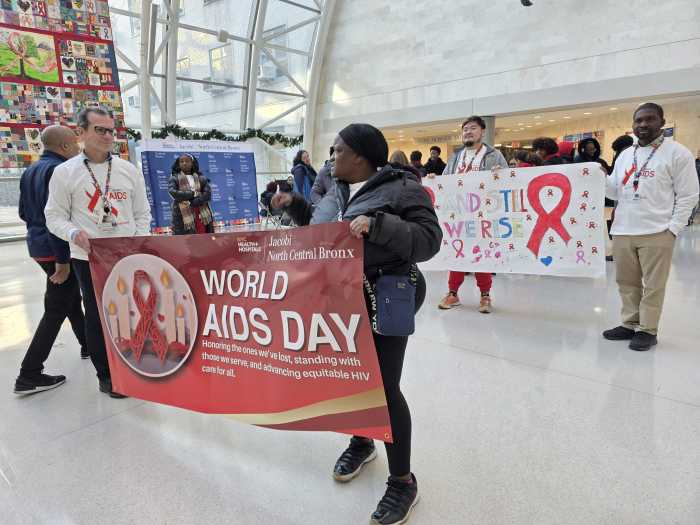Idaho Governor Butch Otter.
BY ARTHUR S. LEONARD | In a May 20 ruling, a three-judge panel of the Ninth Circuit Court of Appeals extended — pending the appeals process — what had been a temporary stay of a federal court ruling that struck down Idaho’s ban on same-sex marriage.
A week earlier, Magistrate Candy Wagahoff Dale ruled that the ban, which also denied recognition to valid out-of-state marriages by same-sex couples, violated the 14th Amendment of the US Constitution. She ordered the state to begin issuing marriage licenses three days later, on May 16, and denied Republican Butch Otter’s motion for a stay.
In extending its May 15 temporary stay, the Ninth Circuit also expedited its consideration of Otter’s appeal. In issuing its stay, the three-judge panel cited the January 6 stay issued by the US Supreme Court of a December order by US District Judge Robert Shelby that threw out Utah’s same-sex marriage ban. That stay gave the State of Utah time to appeal Shelby’s ruling to the 10th Circuit.
Ninth Circuit blocks weddings, expedites appeal, suggests its tougher standard of review permanent
The Ninth Circuit panel, however, implicitly acknowledged the urgency of the plaintiffs’ quest for the right to marry or have their marriages recognized, scuttling its customary briefing timetable, setting tight deadlines for the appeal, and informing the parties there would be no extensions. The written briefing process will be completed in July, with oral arguments expected the week of September 8.
Judge Andrew D. Hurwitz, an Obama appointee and the junior member of the three-judge panel, in a concurring opinion, explained that while the Supreme Court’s January stay in the Utah case “has virtually instructed courts of appeals to grant stays in the circumstances before us today,” if the panel “were writing on a cleaner slate,” the unlikelihood of the state actually prevailing on appeal “counsels against the stay requested by the Idaho appellants.”
Acknowledging, “It is almost certain that the Supreme Court will eventually resolve the merits of this appeal,” Hurwitz asserted that under the Ninth Circuit’s new precedent for examining claims of sexual orientation, “I find it difficult to conclude that the Idaho ban on same-sex marriage would survive interim Ninth Circuit review.” In a recent ruling on the peremptory exclusion of a gay juror in civil litigation over an AIDS drug between SmithKline Beecham and Abbott Laboratories, the Ninth Circuit found that “heightened scrutiny” — which presumes that laws under challenge are unconstitutional unless the government demonstrates that it significantly advances an important government policy — must be applied when plaintiffs claim discrimination based on their sexual orientation.
Hurwitz also said that in balancing the harms faced by the plaintiff couples and the state in deciding whether a stay was warranted, he could find no public interest that outweighed the burden put on the couples challenging the marriage ban.
In her May 13 ruling, Dale found that the Idaho marriage ban violates the 14th Amendment Due Process and Equal Protection Clauses. Her decision closely resembles the long string of federal trial court decisions dating back to the December Utah ruling, but it has one important distinguishing factor — it’s the first decision by a trial court within the Ninth Circuit to rule on a marriage equality claim in light of the SmithKline heightened scrutiny ruling.
Most legal commentators agree with Hurwitz that a ban on same-sex marriage cannot survive heightened scrutiny review.
In defense of Idaho’s marriage ban, the state argued that SmithKline was distinguishable from this case because it is limited to “instances of proven animus or irrational stereotyping.”
Dale rejected that contention.
“SmithKline addresses purposeful discrimination and the perpetuation of impermissible stereotypes, but it does so,” she found, in the context of jury selection, not regarding its discussion of the DOMA case. The DOMA holding, Dale concluded, “was undeniably broad: ‘[Its] heightened scrutiny applies to classifications based on sexual orientation.’ Had the Ninth Circuit intended to limit its holding to cases involving animus or irrational stereotyping, it easily could have done so. Instead it found [the DOMA ruling] to be ‘dispositive of the question of the appropriate level of scrutiny in this case.’”
Ironically, Dale did not need the SmithKline precedent to reach her result since she had already concluded that Idaho’s marriage ban would be subjected either to strict or heightened scrutiny because it abridges a right frequently referred to by the Supreme Court as fundamental: the right to marry.
The Idaho lawsuit was no more about the right to same-sex marriage, she concluded, than the 1967 challenge to Virginia’s miscegenation law was about the “right to interracial marriage.” Mentioning also cases about the right of prisoners and dead-beat dads to marry, she wrote, “Even in cases with such vastly different facts, the Supreme Court has consistently upheld the right to marry, as opposed to a sub-right tied to the facts of the case.”
She also wrote, “The Supreme Court’s marriage cases demonstrate that the right to marry is an individual right, belonging to all. If every individual enjoys a constitutional right to marry, what is the substance of that right for gay and lesbian individuals who cannot marry their partners of choice? Traditional man-woman marriage is no answer, as this would suggest that gays and lesbians can switch off their sexual orientation and choose to be content with the universe of opposite-sex partners approved by the State.”
Dale carefully reviewed all of the state’s justifications for its ban and found them wanting. The argument that the ban advanced the welfare of children struck her as “so attenuated that it is not rational, let alone exceedingly persuasive.” She rejected outlier “scientific” publications that argue children need to have parents of both sexes in order to thrive, writing, “The best that can be said for [the state’s] position is that some social scientists quibble with the prevailing consensus that the children of same-sex parents, on average, fare no better or worse than the children of opposite-sex parents.”
But even that argument is irrelevant, Dale noted, saying the real issue was whether there is any “logical link between child welfare and Idaho’s wholesale prohibition of same-sex marriage.” In fact, she pointed out, denying same-sex couples the right to marry disregards “the welfare of children with same-sex parents.”
Dale also dismissed arguments that banning same-sex marriage somehow encourages heterosexuals to procreate responsibly by raising their children in married households, that federalism leaves the question of who can marry solely in the hands of states, or that the state’s policy was necessary to “accommodate religious freedom.” Quoting from the federal district court’s marriage equality opinion in the Utah case, Dale wrote, “By recognizing the right to marry a partner of the same sex, the State allows these groups the freedom to practice their religious beliefs without mandating that other groups must adopt similar practices.”
As so many of the other federal judges who have ruled in favor of marriage equality have done, Dale quoted from Supreme Court Justice Antonin Scalia, who, in dissent, warned that the high court’s 2003 sodomy ruling would open up constitutional claims to same-sex couples’ right to marry. Idaho argued that the discriminatory effects of denying their right to marry are “merely incidental… [to] efforts to preserve Idaho’s traditional civil marriage institution.” In that vein, Scalia had argued, “But ‘preserving the traditional institution’ is just a kinder way of describing the State’s moral disapproval of same-sex couples” — disapproval that the sodomy ruling found an impermissible ground for discrimination.
“Idaho’s Marriage Laws,” Dale concluded, “deny same-sex couples the economic, practical, emotional, and spiritual benefits of marriage, relegating each couple to a stigmatized, second-class status. Plaintiffs suffer these injuries not because they are unqualified to marry, start a family, or grow old together, but because of who they are and whom they love.”
The Ninth Circuit already has another marriage equality appeal pending, in the unsuccessful challenge to Nevada’s marriage ban decided prior to last summer’s DOMA ruling. Arguments in that case, originally scheduled for April, were postponed as the circuit took up the request of one judge that the heightened scrutiny finding in the SmithKline case be reviewed by the entire circuit. Hurwitz’s reliance on the SmithKline precedent in his concurring opinion on the Idaho stay strongly suggests the circuit has decided not to reconsider that case, so Nevada is therefore also expected to proceed now to oral arguments. Governor Otto’s appeal in Idaho will likely be heard by the same appellate panel.
Four lesbian couples brought the Idaho lawsuit — Susan Latta and Traci Ehlers, Lori Watsen and Sharene Watsen, Shelia Robertson and Andrea Altmayer, and Amber Beierle and Rachael Robertson. They are represented by Boise attorneys Deborah A. Ferguson and Craig Durham and the National Center for Lesbian Rights.














